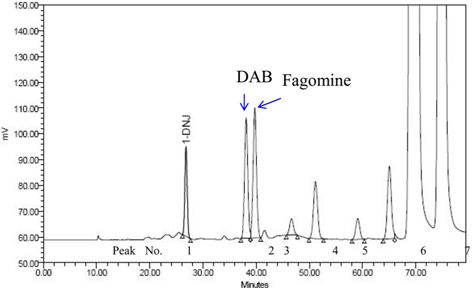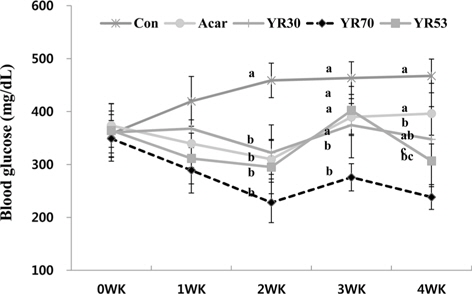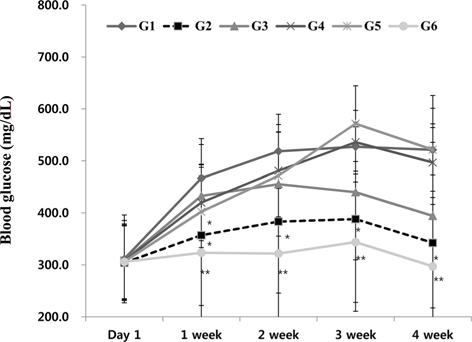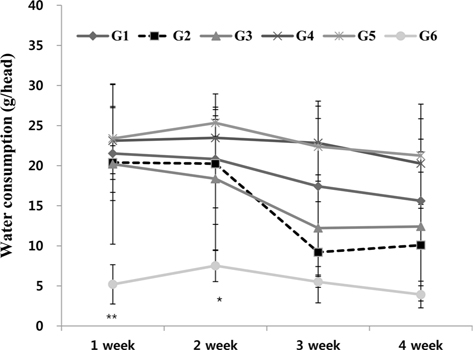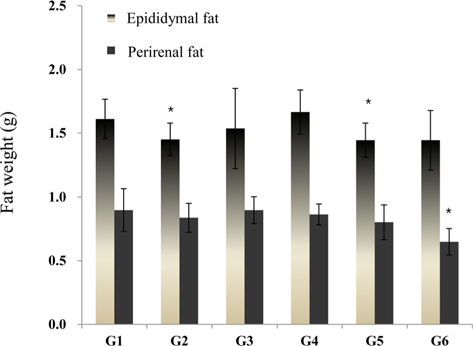



We investigated the 1-deoxynojirimycin (1-DNJ) content of extracts from silkworm larvae at each developmental stage within three silkworm varieties. We also compared the content of the following polyhydroxylated alkaloids in the silkworm extracts: 1-DNJ, fagomine, and 1,4-dideoxy-1,4-imino-d-arabinitol (DAB). In addition, we evaluated the glucose-lowering effects of silkworm extract powder in
Diabetes mellitus is a serious chronic metabolic disorder that has a significant impact on the health, quality of life, and life expectancy of patients, as well as the healthcare system. Nojirimycine was first discovered from a streptomycete, and its naturally occurring hydrogenated product, 1-deoxynojirimycin (1-DNJ) was first isolated from the mulberry tree (Yoshikaki and Hivonu, 1976). Today, more than 20 polyhydroxy alkaloids have been identified from mulberry and silkworm (Asano
>
Preparation of silkworm extracts
Silkworm larvae were reared by feeding mulberry leaves in the spring season of 2012 at the National Academy Agricultural Science. The silkworm varieties used for the experiment were Yeonnokjam, Yangwonjam, and Hansaengjam. The 5th instar 3rd d larvae were quickly frozen with liquid nitrogen and lyophilized, and the resulting dried silkworm powder was extracted with ethanol.
>
High pressure liquid chromatography chromatogram of extracts
1-DNJ content was measured according to the method reported by Kim
>
Measurement of fasting blood glucose levels
Fasting blood glucose levels were measured after the animals fasted for 3 h for 4 wk. The
>
Administration of silkworm extracts to db/db mice
Male C57BL/KSJ-(
>
Measurement of body weight and blood biochemical analysis
The mice fasted for 3 h, and then blood samples were taken after their autopsy. Biochemical analysis of blood TG, TCHO, LDL, GLU, AST, and ALT was performed using a blood biochemical analyzer (AU680, Beckman Coulter, Japan). Fat was taken from the circumference of the perirenal and epididymis during the autopsy, and the weight was measured.
1-DNJ content in silkworm varieties
We compared the 1-DNJ content among silkworm extracts of 5th instar 3rd d larvae and 5th instar 5th d larvae of the Yeonnokjam, Yangwonjam, and Hansaengjam. The Yeonnokjam and Hansaengjam larvae contained higher 1-DNJ than those of Yangwonjam. Furthermore, the 1-DNJ content of 5th instar 5th d larva powder was lower than that of the 5th instar 3rd d larvae. The best new candidate among these extracts was YR53. Yeonnokjam is one of the special silkworm varieties in Korea (Table 1).
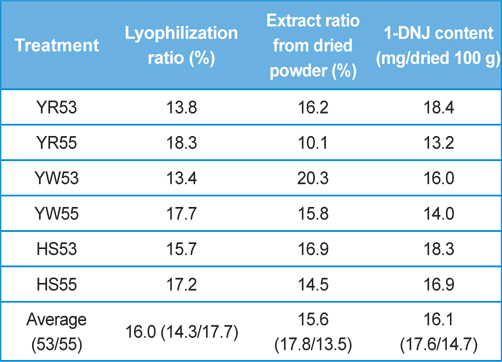
1-Deoxynojirimycin content in silkworm varieties and its ratio in lyophilized material and extracts
>
HPLC analysis of highly polyhydroxylated alkaloids
We established a profile pattern of highly polyhydroxylated alkaloids, such as 1-deoxynojirimycin (1-DNJ), fagomine, and 1,4-dideoxy-1,4-imino-D-arabinitol (DAB), of Yeonnokjam, a silkworm variety. We standardized the manufacturing process with this profile pattern, and now its development, including the establishment of standards as a natural medicine, is in progress (Fig. 1).
>
Effects of silkworm extracts and powder on blood glucose levels
In order to determine the optimal silkworm powder extraction, we selected conditions based on how they lowered glucose levels with varying ethanol concentrations. All groups, with the exception of control and YR30 groups, exhibited glucose-lowering effects. Among these, the YR70 group showed the highest glucose-lowering effects for 4 wk. In conclusion, the optimal extraction condition was 70% ethanol (Fig. 2).
>
Blood glucose-lowering effects of silkworm extracts in db/db mice
Based on blood glucose measurements, there was no statistically significant reduction in blood glucose levels in the G5 (180 mg/kg/d) group compared to that of the control group (
The silkworm extract group did not show statistically significant changes in water intake compared to that of the control group. However, the 22.5 mg/kg/d and 45 mg/kg/d groups reduced their water intake at 3 and 4 wk after administration by approximately 47% and 33% and 41% and 20%, respectively. The water intake of the positive control group was reduced by approximately 70–75% compared to that of the control group over the course of 4 wk (Fig. 4).
>
Changes in body fat and blood biochemical analysis
The two groups of G2 (22.5 mg/kg/d) and G5 (180 mg/kg/d) showed statistically significant decreases in epididymal fat weight (
The positive control group did not show statistically significant decreases in epididymal fat weight, whereas its perirenal fat weight increased (
The blood biochemical analysis indicated that the silkworm extract (180 mg) showed similar decreases in AST and ALT levels. Similar decreases were found in the positive control group as well. G2 (22.5 mg/kg/d) showed statistically significant decreases in GLU levels compared to that of the control groups. The positive control group (G6) also exhibited statistically significant decreases in GLU levels compared to the control groups (
[Table 2.] Blood biochemical analysis in db/db mice.

Blood biochemical analysis in db/db mice.

